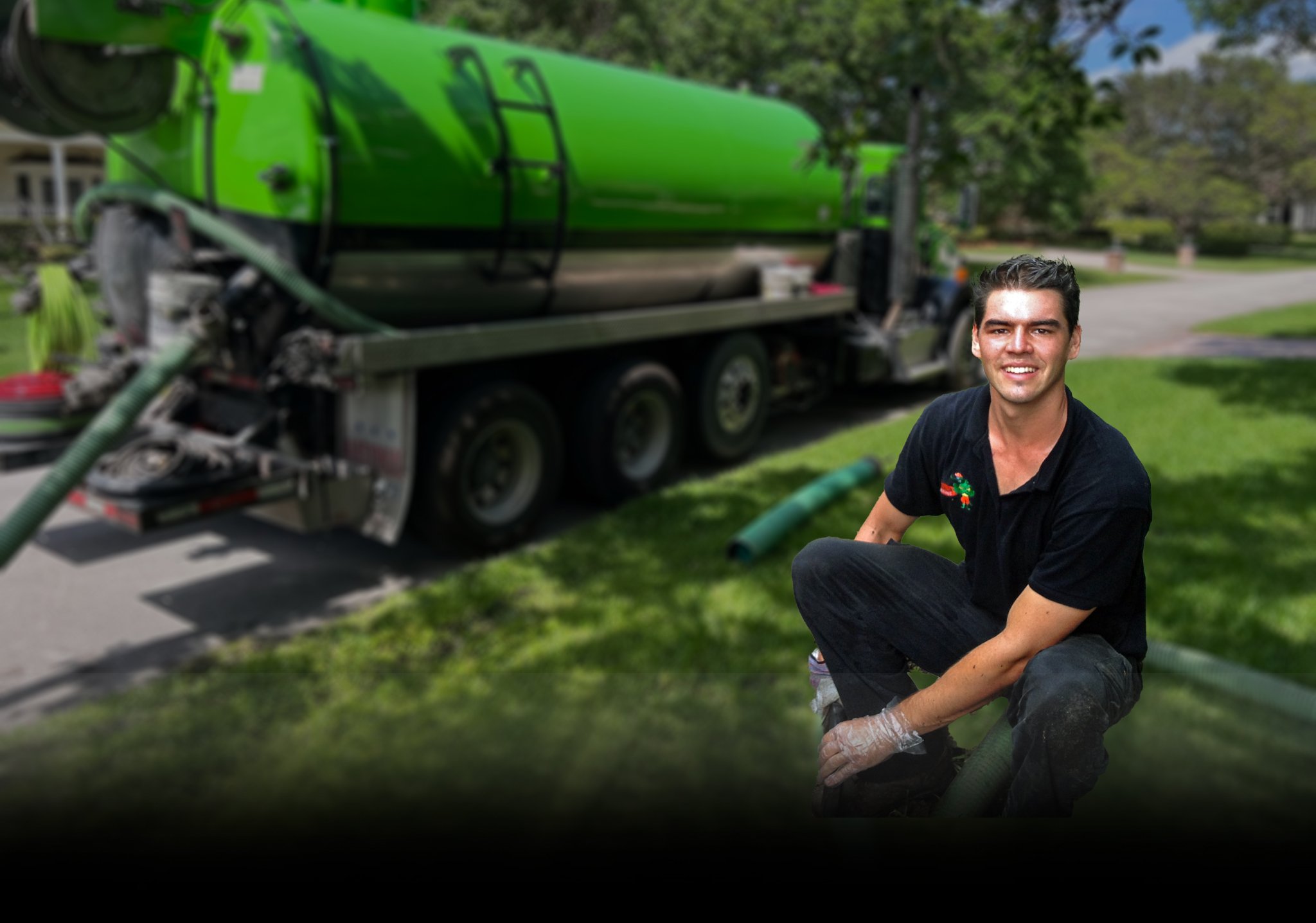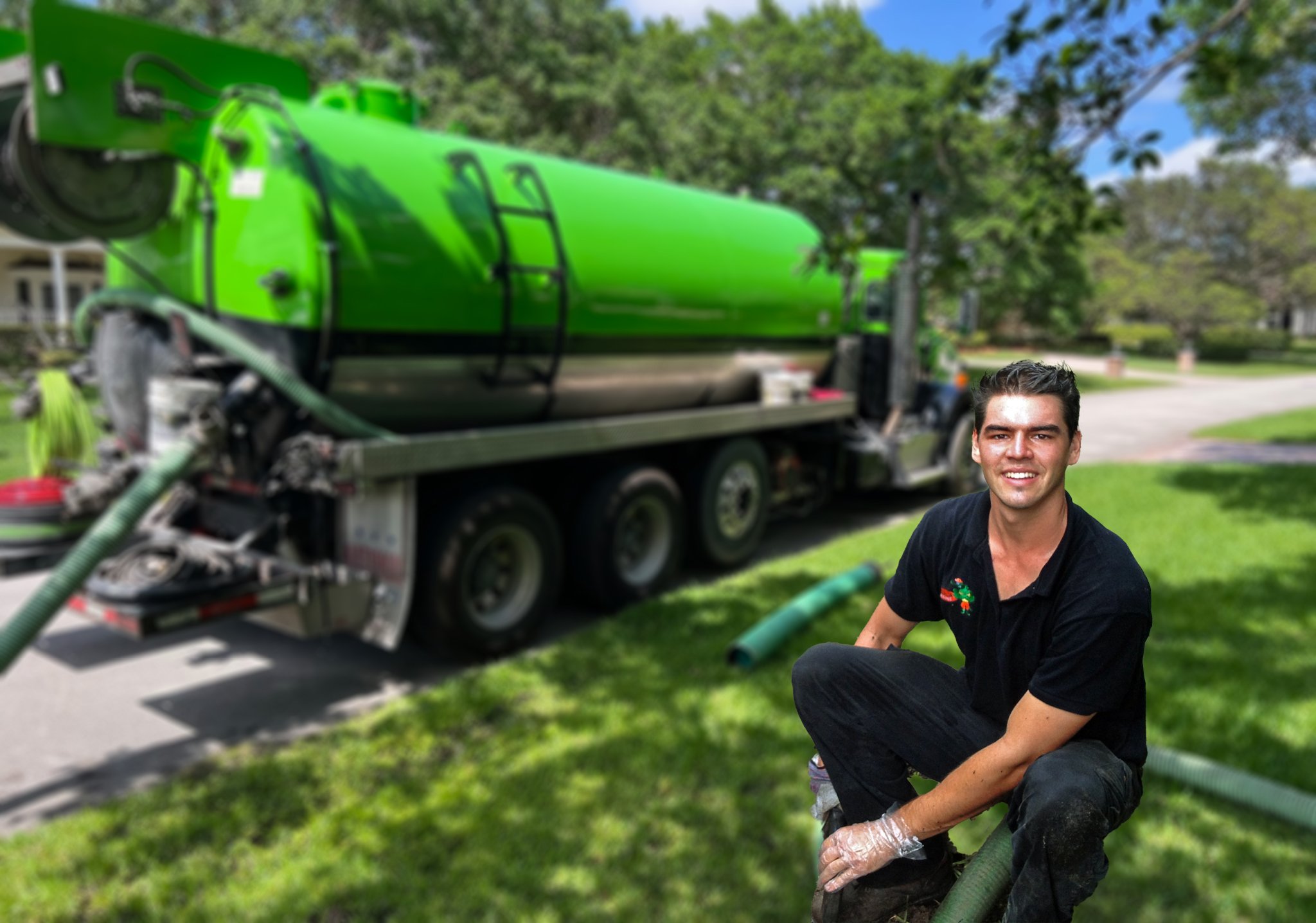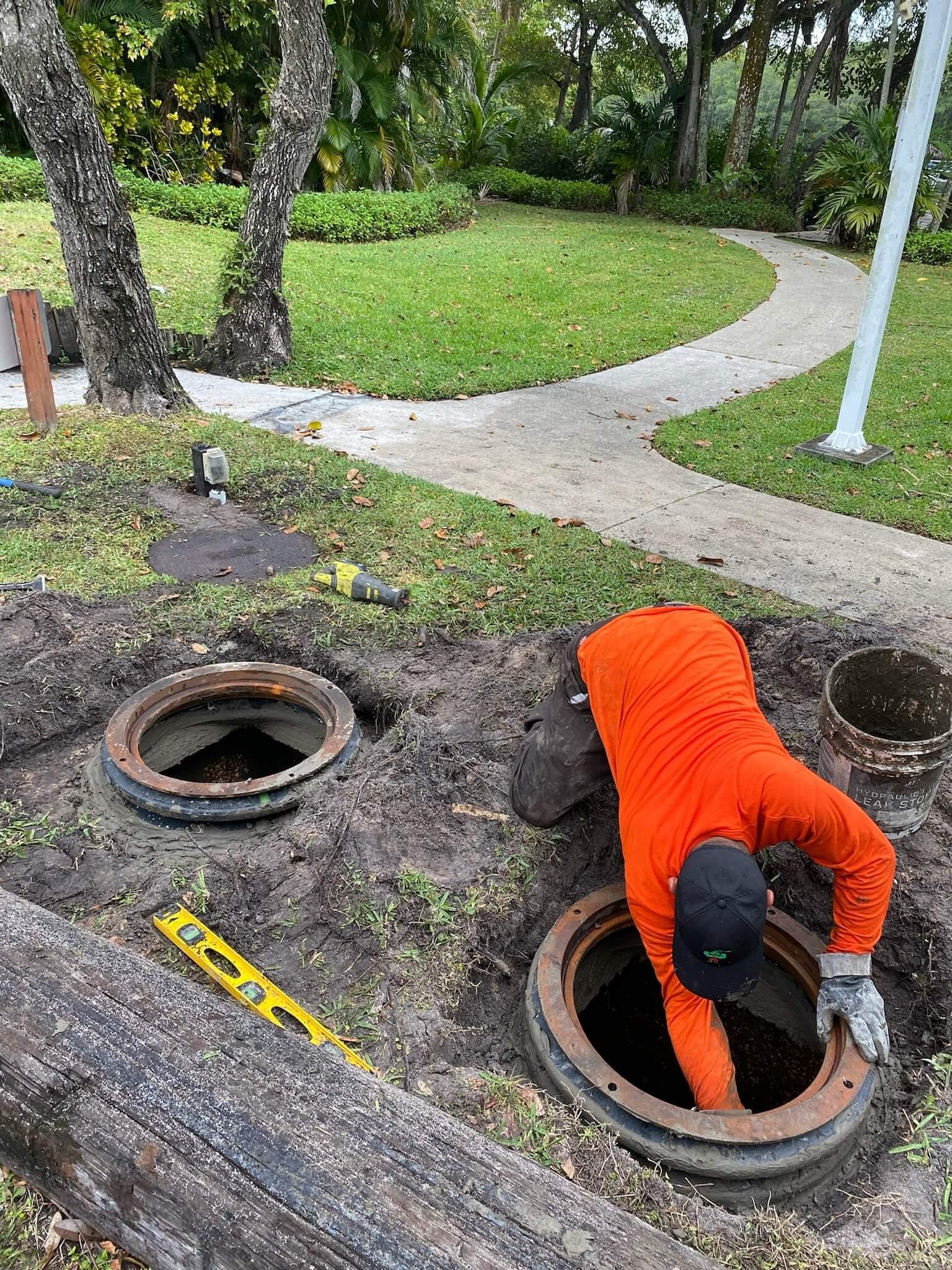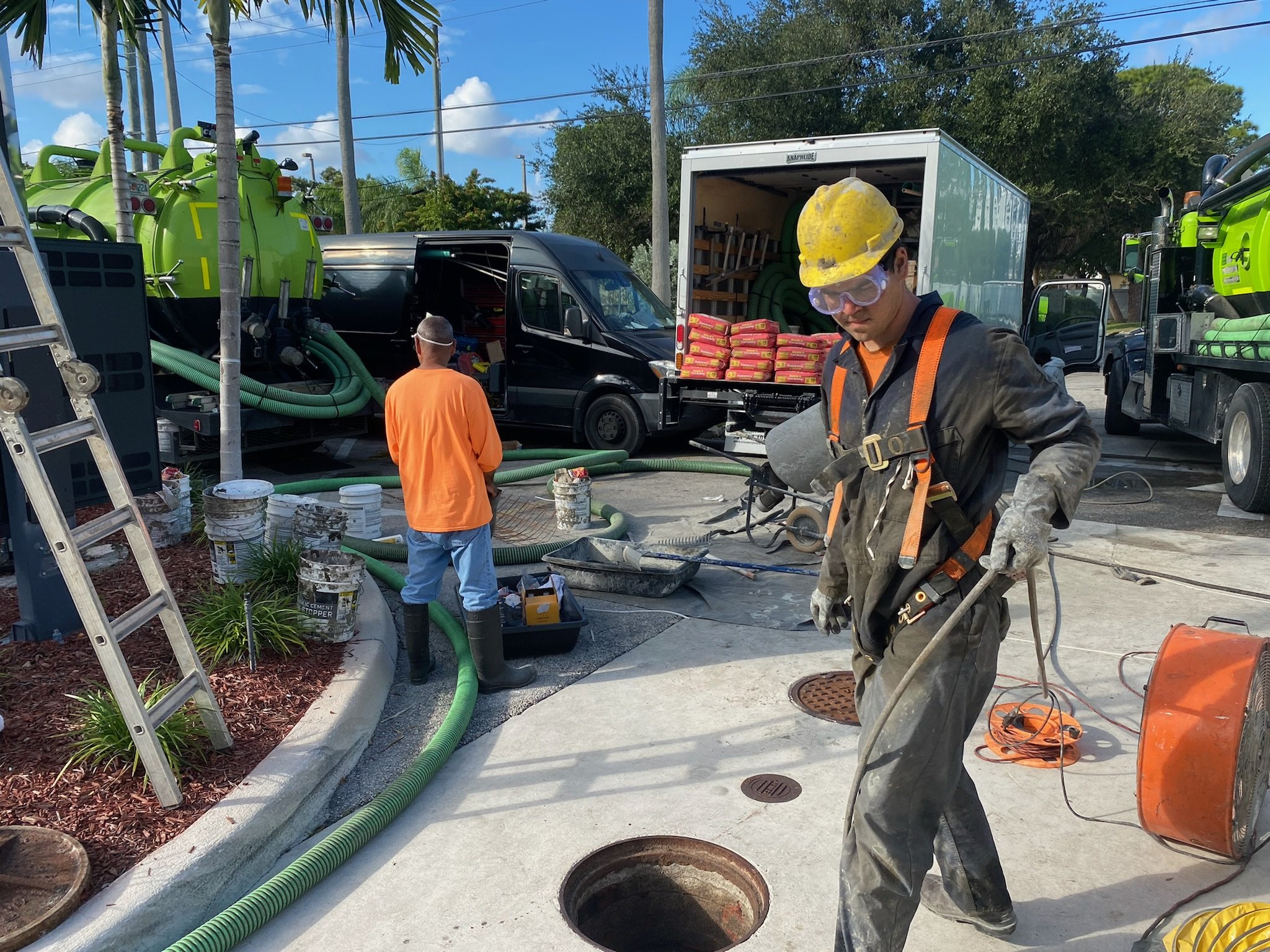Coral Gables

Coral Gables Septic Tank Cleaning
#1 Rated Same Day Septic Service & Repair Company.
★★★★★ 4.8 out of 5 stars
Fast Same Day Service
Family Owned Since 1989 Maria and John
Highest Ratings in Coral Gables, Florida
Drain Cleaning Masters
Septic Tank Cleaning Coral Gables: Tips from Brandon Burgun
Introduction: Why Septic Tank Maintenance Matters
Hey there, I'm Brandon Burgun, a second-generation septic system technician and manager at Alligator Septic in Coral Gables. I've been cleaning and repairing septic tanks since I was 15, and I've picked up some valuable knowledge along the way. I'm here to share my expertise on septic tank cleaning, septic tank service, septic tank pumping, and septic repairs. Let's dive in!
My Background as a Septic System Technician
Growing up, I learned the ins and outs of septic systems from my parents John & Maria, who are seasoned septic system professionals themselves. I pumped my first septic tank in Coral Gables over by the Biltmore Hotel when I was 15 with my dad. But enough about me, let's get to the good stuff!
The Importance of Regular Maintenance
Regular maintenance extends the life of your system and helps to prevent costly repairs or replacements. You don't want to wait until there's a problem to start paying attention to your septic tank! Some Of these Coral Gables septic tanks were built in the 1950s and are still functional when properly maintained.
Knowing When It's Time for Cleaning
As a general rule of thumb, septic tanks should be pumped every 1 to 3 years, depending on factors such as tank size, household size, and water usage. Signs that it's time for septic tank cleaning include slow drains, unpleasant odors, or water pooling in your yard near the drain field.
The Septic Tank Cleaning Process
When it's time for septic tank cleaning, I follow a thorough process to ensure your system is cleaned efficiently and effectively. Here's a step-by-step overview of what you can expect when I perform the pumping process:
The Pumping & Cleaning Process
Arriving on site: I will arrive at your home in a large pump truck, fully equipped to handle any septic or drain cleaning problem.
Locating the septic tank: If your tank doesn't have access covers visible at the surface, I start probing the ground to locate the septic tank. In most cases, I can find the tank within 5 minutes using the probe. If locating the tank proves to be more challenging due to factors like depth, obstructions, or landscaping, I'll use a camera and locator to pinpoint the exact location.
Exposing and opening the lid: Once I've found the tank, I'll expose the lid and open it to access the interior. Based on my experience most tanks in the Gables still do not have steel manhole covers to the surface. The old tanks usually have concrete slab covers that are prone to not sealing and deterioration. I always give the customer the option to install manhole covers because it makes taking care of the septic system so much easier in the long run.
Assessing the tank: With the tank open, I'll check the liquid level, sludge layer, and overall condition of the tank to determine the extent of the cleaning and repair if required.
Running the vacuum and pressure washer hoses: I'll run the vacuum hose and pressure washer hose from the truck to the tank and start pumping.
Breaking up sludge and debris: I use the pressure washer to break up any sludge, sand, or debris in the tank while vacuuming it out. This ensures that all the accumulated waste is removed effectively.
Inspecting the tank's structural integrity: After getting all the sludge out and reaching the concrete bottom of the tank, I'll look for any structural problems that may need addressing.
Sealing and backfilling: Once the cleaning is complete, I'll seal the lid and backfill the hole if necessary, making sure everything is left neat and tidy.

Emergency Septic System Services Coral Gables.
When the toilet or tub is backed up we know you can’t wait.
Our fleet of 7 septic pumping trucks and repair crews are ready to go.
Septic System Frequently Asked Questions
-
Pump and pressure wash every 1-2 years depending on usage. Example 2 people living in a house with a 1,000 gallon tank every 2 years. Family of 4 living in a house with a 1,000 gallon tank pump yearly.
-
In South Florida most tanks are located 5-10 feet off the house, and usually inline with the main vent stack on the roof.
Septic tank should be within 8 inches of surface or have steel manhole covers to surface.
-
As long as there is proper access to the tank it takes anywhere between 45 minutes to an hour.
If the tank is under pavers or a concrete slab it takes longer for us to pinpoint the opening with a camera and digital locator.
-
Toilets will gurgle or make odd noises when flushed. Sewage may start to build up in the shower or tub. Odors in the house or near septic system area.
Talk to an expert now with any other questions you may have

Coral Gables Septic Tank Pumping & Cleaning
Alligator Septic has the most advanced equipment in Coral Gables! Our technicians are trained to find any septic tank no matter where it may be located. If our technician cannot get an accurate location using their probes, then we will use something called a “locating and transmitter device" which can locate your underground septic tank or manhole with pinpoint accuracy.
If you're in Coral Gables and are experiencing septic tank problems, then please don't hesitate to give Alligator Septic a call. We'll be more than happy to come out and perform a diagnosis, and we'll do whatever it takes to get your septic system running smoothly again.
Homeowners should have their septic tank pumped every 2 years, but the age and maintenance history of your system can affect how often you will need to have your septic tank cleaned! Systems that are failing may require pumping more frequently than systems that have been repaired - so it's important to maintain them properly over time to avoid backups and costly system failures. Neglecting a basic septic tank pumpout could lead into major problems down the road such as tank deterioration and drainfield failure.
Why does my septic tank drain slowly when it rains?
Higher than average rainfall can cause your septic tank to back up and require pumping. If you have a failing drainfield or one that may be draining slowly, system saturation from rain water can cause plumbing fixtures throughout your home to drain slowly or even worse, backup. If you notice toilets are beginning to drain slowly or hear gurgling sounds, it is time to get your system checked. You do not want to wait for your septic tank to backup and to potentially cause more harm to the drainfield portion of the system due to lack of septic tank maintenance.
How do I know if I have a septic tank?
Almost all residential homes in Coral Gables have a septic tank. If you check your water bill and it does not have a charge for sewer, you have to be on septic. In rare cases, you may also have a city sewer charge, but the septic tank was never tied into the city sewer system. Therefore, your home remains on septic. This part can be a bit more tricky, but regardless our septic company can figure out your situation. Using knowledge of the code requirements, 30+ years of experience, and locating techniques, Alligator Septic can confirm if you are on septic with a scheduled property visit. Schedule a diagnosis with us today! We will find your septic tank faster than any other septic company in South Florida. We come prepared with all necessary tools and equipment. Whether it takes a probe or more advanced locating devices, Alligator Septic is full capable of quickly finding your septic tank!
How long does it take to pump and clean a septic tank?
To provide a full service, pumping and pressure cleaning of a septic tank, it normally takes about 1.5 hrs on average. Our office provides all helpful information, so our technicians can be their most prepared selves. Once arrived to your home, our technicians introduce themselves and get right to work! Once they are able to locate the septic tank, they will normally excavate a large concrete slab cover. Newer septic systems in Coral Gables, may be made from polyeurthane. Then they will run their hose, pump and if necessary pressure wash the system down. Factors that contribute to a fast and smooth service are tank location, manhole cover access, and a communicative homeowner! When our customers provide us with as much information about their system as possible, we can provide a quicker service.

How a Coral Gables, FL Septic System Works
Septic tank pumping is an essential task for any homeowner with a septic system. Septic systems are underground wastewater treatment structures that collect and treat sewage from your home. The septic tank is the first step in this process, where the solid waste settles to the bottom and forms a sludge layer. The liquid waste, also known as effluent, flows out of the septic tank and into the drainfield, where it is further treated.
Over time, the sludge layer in the septic tank builds up and reduces the capacity of the tank, making it necessary to pump it out. Neglecting this essential maintenance task can result in backups, sewage leaks, and system failures, leading to expensive repairs.
When to Pump Your Septic Tank
The frequency of septic tank pumping depends on various factors, such as the size of the tank, the number of people using the system, and the amount of wastewater generated. As a general rule of thumb, it's recommended to pump your septic tank every 2 years. However, this can vary based on your specific circumstances.
It's crucial to keep an eye out for warning signs that your septic tank needs pumping. Some common signs include slow drains, foul odors, standing water, and sewage backups. If you notice any of these symptoms, it's essential to contact a professional septic tank pumping service to prevent any further damage to your system.
The Benefits of Regular Septic Tank Pumping
Regular septic tank pumping provides numerous benefits, such as:
Preventing costly repairs and replacements
Reducing the risk of system failure
Improving the lifespan of your septic system
Protecting the environment by preventing sewage leaks and contamination
How Septic Tank Pumping Works
Septic tank pumping is a complicated process that requires specialized equipment and expertise. The process involves the following steps:
Locate the septic tank: A professional septic tank pumping service will locate the septic tank and uncover the access lid.
Inspect the tank: The technician will visually inspect the septic tank to assess its condition and check for any signs of damage or leaks.
Pump out the tank: Using a powerful vacuum truck, the technician will remove all the sludge and liquid waste from the septic tank.
Clean the tank: After pumping out the tank, the technician will use high-pressure water to clean the interior of the tank and remove any residual sludge.
Check the drainfield: The technician will inspect the drainfield to ensure that it's functioning correctly and identify any potential issues.
Re-install the access lid: Once the septic tank pumping is complete, the technician will replace the access lid and ensure that it's secure.
Conclusion
Septic tank pumping is a critical maintenance task that should not be neglected. Regular pumping can help prevent system failures, costly repairs, and environmental contamination. If you notice any warning signs that your septic tank needs pumping, contact a professional septic tank pumping service immediately.
We hope this guide has been helpful in understanding septic tank pumping in Coral Gables. If you have any questions or require additional information, please do not hesitate to contact us. Thank you for reading!













